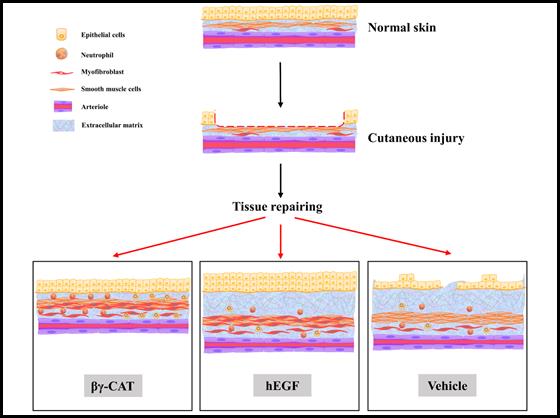Tissue repair is a common problem during animal survival; however, scar tissue formation is a common by-product of human wound healing, which can lead to severe clinical dysfunction. Therefore, how to promote tissue regeneration and repair while reducing scar formation is an important issue.
Amphibian skin plays an important physiological role in breathing and hydro-salinity balance, and its wound repair must be scarless to avoid damaging the corresponding physiological function and causing fatal consequences. Unlike traditional membrane proteins that are familiar to people (including membrane receptors, ion channels, transporters, etc.), pore-forming proteins are a class of non-classical membrane proteins, which can exist in the soluble form of secretory monomers, and insert into the cell membrane after oligomerization under specific conditions.
At present, the understanding of numerous pore-forming proteins in plants and animals mainly focuses on their cytotoxicity; however, their physiological and pathological functions are still unknown.
Previously, the team led by Prof. ZHANG Yun from Kunming Institute of Zoology, Chinese Academy of Sciences, found the first novel pore-forming protein and trefoil factor complex betagamma-CAT in Bombina maxima. This endogenous pore-forming protein complex can stimulate vesicle formation, form membrane channels in endolysosome and regulate its function .
In this study, GAO Zhenhua, et al. further revealed that this complex can stimulate tissue repair. Compared with epidermal growth factor (EGF) widely used in clinic, this complex can not only promote wound healing by accelerating the re-epithelialization of skin wound, but also reduce traumatic edema, promote scar-free healing and resist drug-resistant bacterial infection.
This work has been published online in the Journal of the Federation of American Societies for Experimental Biology (FASEB Journal) with the title of “Pore-forming toxin-like protein complex expressed by frog promotes tissue repair”, on July 31, 2018. (https://doi.org/10.1096/fj.201800087R).
This research not only finds unknown effector protein complexes and novel cellular pathways in wound repair of vertebrates, but also provides new ideas and clues for further understanding the molecular pathological mechanism of tissue regeneration and repair and scar formation, showing practical significance for the research and development of novel drugs for disease treatment.
GAO Zhenhua is the first author, and Prof. ZHANG Yun and Dr. LI Shengan are the corresponding authors. This work was supported by grants from the National Natural Science Foundation of China, the “Yunling Scholars” Program and the Western Light Talents Training Program of the Chinese Academy of Science.

By GAO Zhenhua, Editor: HE Linxi
Contact
Zhang Yun
zhangy@mail.kiz.ac.cn

